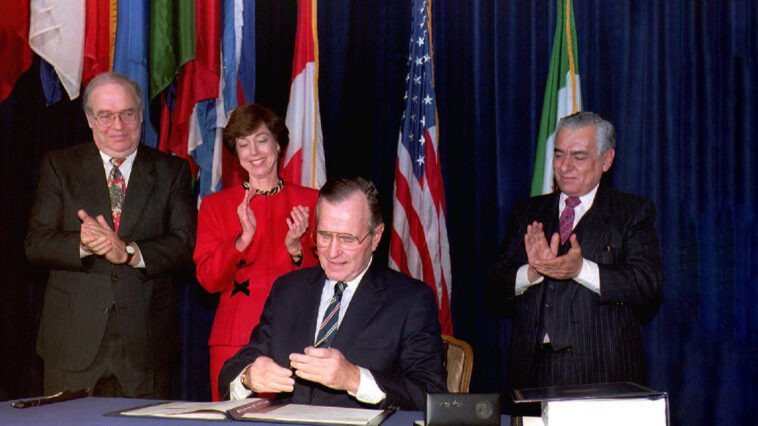This week, a significant move was made towards mitigating the escalating trade tensions between two dominant global economies, the United States and China. By mutually deciding to decrease presently hefty tariffs inflicted upon each other, both nations are attempting to avert the ongoing crisis. Previously, President Trump had consistently expressed his unwillingness to abate the tariffs without China offering any significant trade relaxations. However, this recent move is seen as an acceptance of the high stakes involved in a full-scale trade warfare with China.
Despite the forefront bravado projected by the White House, the Trump administration has decided, albeit temporarily, to retreat from imposing exaggerated tariffs. This decision appears to have been triggered by early indications of economic pressure exerted upon businesses and customers. In responding to these actions, Mr. Trump clarified that the ultimate purpose was not to inflict economic harm on China during a briefing at the White House.
While shedding light on his decision, President Trump elaborated that the tariffs previously imposed continue to be upheld. However, the future discussions would largely revolve around creating opportunities for American businesses in China. He also disclosed his anticipation for having a conversation with China’s President Xi Jinping later during the week. Full agreement documentation, however, was predicted to be a lengthy process.
The United States and China had previously made a joint declaration earlier in the day, announcing a mutual suspension of their current tariffs for a period of 90 days. During this time, the conversations initiated over the weekend will be continued and further negotiated. In accordance to the agreement, a severe cut in both nations’ tariffs has been proposed.
The suggested slash implies that the U.S. would bring down the tariffs on Chinese goods from an exorbitant 145 percent to a more modest 30 percent. Concurrently, China is expected to reciprocate by lowering the tariffs levied on American commodities from 125 percent down to a mere 10 percent. This transformation in the trade environment is projected to reposition the tariff rates to where they stood prior to the arbitrary hike earlier this year.
President Trump had previously made a proclamation on April 2, marking it as ‘Liberation Day’ and significantly escalating the tariffs. Despite this, the recent negotiations concluded in Switzerland presented an extended weekend of intensive discussion, bringing the tariff rates back in line with their starting points.
However, the meeting in Switzerland, while successful in terms of de-escalating the tariff situation, did not lead to any solid concessions. The only apparent accomplishment was the mutual agreement to carry on with the dialogues. This signals a long journey ahead for both nations as they continue to negotiate the intricacies of their intertwined trade relations.

